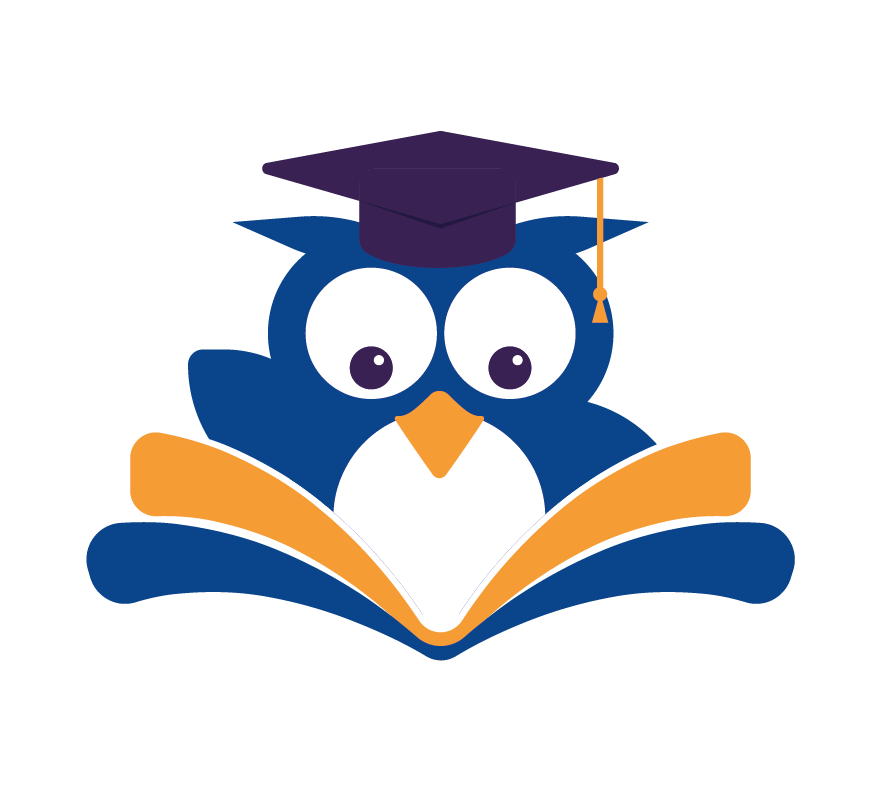Imagine learning new things easily without struggle. Effortless learning is real and we can help you get there. By using the right learning techniques, you can reach your full potential and enjoy learning.
We’re not just talking about a new method; it’s a mindset change. By focusing on connection and joy in learning, as Lieke says in “Unlock Your Potential,” we can turn studying into something fun. This isn’t just about being more productive. It’s about making learning a fun and lasting part of your life.
Key Takeaways
- Discover the power of effortless learning techniques.
- Understand how to unlock your full potential.
- Learn how to make studying an enjoyable experience.
- Explore the importance of connection and joy in learning.
- Transform your approach to learning with a simple mindset shift.
Understanding the Science Behind Effortless Learning
The science of effortless learning uncovers how our brains work. Zig Ziglar said, “If you are not willing to learn, no one can help you. If you are determined to learn, no one can stop you.” This shows the power of knowing how our brains function.
How Your Brain Naturally Acquires Knowledge
Our brains learn through a complex process. Neurons and synapses play a key role. When we learn something new, it creates a pathway in our brain.
The more we practice or revisit this information, the stronger the pathway becomes. This makes recalling information easier over time.
This natural process is key to effortless learning. By understanding how our brains learn, we can improve our learning methods.
The Neuroscience of Retention and Recall
Retention and recall are vital in learning. Retention is keeping information over time. Recall is accessing that information when needed. Neuroscience shows that repetition strengthens neural connections.
Spaced repetition is a technique that enhances retention. It involves reviewing material at longer intervals, strengthening neural pathways.
Debunking Learning Myths That Hold You Back
Many of us believe wrong things about learning. One myth is that some people are naturally better at learning. But research proves that everyone can learn well with the right strategies.
Another myth is that cramming is effective. But cramming can cause short-term memory overload and doesn’t help with long-term retention. Knowing the truth behind these myths helps us use better learning strategies.
Discovering Your Unique Learning Style
Unlocking your learning potential starts with understanding how you learn best. We all absorb and process information differently. Recognizing your personal learning style can make a big difference in how well you study.
Visual, Auditory, and Kinesthetic Preferences
Learning styles are often divided into visual, auditory, and kinesthetic preferences. Visual learners do well with images and visual aids. Auditory learners prefer sound and oral instructions. Kinesthetic learners learn best through hands-on experiences and practical exercises.
For example, a visual learner might use diagrams to understand complex concepts. A kinesthetic learner might prefer conducting experiments. This shows how different learning styles work.
Multimodal Learning Approaches
Many of us don’t fit neatly into one category; we’re multimodal learners. We benefit from a mix of different learning methods. Embracing multimodal learning can make studying more engaging and effective.
For instance, watching a video (visual) and then discussing it in a group (auditory and kinesthetic) can help reinforce learning. This shows how combining different methods can be beneficial.
Customizing Study Methods to Your Strengths
Once you’ve identified your learning style, you can tailor your study methods to suit your strengths. This might involve using different techniques such as mind maps for visual learners or creating rhymes for auditory learners.
By aligning your study habits with your learning style, you can make learning more enjoyable and efficient. This approach can help you study better and retain information longer.
Creating the Optimal Learning Environment
Turning your study space into a productivity powerhouse is key for easy learning. Your environment greatly affects your ability to focus and learn.
Physical Space Organization for Maximum Focus
Organizing your study area is the first step to a great learning environment. Declutter your study area and make it only for learning. A clean space leads to a clear mind!
- Remove distractions like TVs and video games.
- Use ergonomic furniture for comfort.
- Keep essential resources within reach.
Digital Environment Setup and Tool Selection
Your digital space is as important as your physical one. Choose the right tools that help you learn without distracting you.
- Select a reliable learning management system.
- Use apps that help you stay organized.
- Consider noise-cancelling headphones for focus.
Eliminating Distractions Without Willpower Drain
Reducing distractions is crucial for staying focused. Here are some tips:
- Use website blockers to limit social media.
- Set your phone to ‘Do Not Disturb’ mode.
- Create a schedule to manage your study time effectively.
Ambient Sounds and Background Conditions
The right ambient sounds can improve your learning. Some like complete silence, while others prefer background noise. Try different sounds to see what works best for you.
By improving both your physical and digital spaces, you’ll focus and learn better. The aim is to create a supportive environment without distractions.
The Power of Spaced Repetition Systems
Discover the secret to easy learning with spaced repetition systems. This method changes how we study and remember things. It uses science to help you learn better and faster.

Why Traditional Cramming Sabotages Learning
Cramming is a bad study habit. It makes you try to learn too much too fast. This can make you tired and forget things quickly. Studies show cramming leads to losing a lot of information soon after.
- Cramming leads to mental fatigue
- Decreased retention rates
- Inefficient use of study time
Implementing Science-Backed Review Schedules
Want to use spaced repetition? Start with a review schedule that helps you remember. Review things at longer intervals to keep them in your memory. You can use flashcards or digital schedules for this.
- Identify key material to review
- Create a review schedule with increasing intervals
- Use digital tools to automate the process
Digital Tools That Automate Your Review Process
Many digital tools can make reviewing easier. From flashcard apps to digital notes, they save time and keep you on track.
Creating Custom Flashcard Systems
Creating a custom flashcard system is a great way to use spaced repetition. You can use real flashcards or apps like Anki for digital ones. The goal is to review them at the right times to remember more.
Adding spaced repetition to your study routine helps you remember more. Try it and see how it changes your learning!
Effortless Learning Through Association Techniques
Our brains are wired to connect things. This makes learning easier and more fun. Association techniques help us link new info to what we already know. This makes it easier to remember and recall.
Building Memory Palaces and Visualization Frameworks
Memory palaces are a powerful tool. They use a place you know well, like your home. You link new info to spots in that place.
For example, to remember historical dates, imagine each date at a spot in your home. The more vivid your images, the better they’ll stick.
Steps to create a memory palace:
- Choose a place you know well, like your home or school.
- Picture a path through this place.
- Link new info to spots along this path.
- Practice walking through your memory palace to solidify the info.
Creating Meaningful Connections Between Concepts
Creating links between new and old info is key. This makes learning smoother. It’s like building a bridge between what you know and what you’re learning.
For example, when learning a new language, link new words to ones you know. This makes learning easier and more fun.
| Concept | Association | Memory Aid |
|---|---|---|
| New Vocabulary | Similar word in native language | Visualize a scenario linking both words |
| Historical Date | Personal event or birthday | Associate the date with the event or person’s age |
Storytelling as a Powerful Encoding Method
Storytelling makes info stick in our memory. It makes learning more fun and memorable. By turning info into a story, we engage our brains better.
“The art of storytelling is the art of making memories.” –
For example, to remember a list, create a story that includes each item. The more unique and vivid your story, the better it’ll stick.
Mnemonic Devices for Different Subject Areas
Mnemonic devices help us remember by linking new info to familiar things. They can be acronyms, rhymes, or mind maps.
Each subject needs its own mnemonic devices. For math, use acronyms to remember formulas or the order of operations (e.g., PEMDAS).
Examples of mnemonic devices:
- Acronyms: Create a memorable acronym from the first letter of each word.
- Rhymes: Use rhymes or songs to remember info.
- Mind Maps: Visualize info in a map, using colors and images to connect ideas.
Using these techniques can make learning more fun and effective. They help everyone, from students to professionals, reach their learning goals.
Achieving Flow State for Smooth Learning Processes
When you’re in the zone, learning feels easy. But how do you get there? Getting into a flow state is key for learning well. It lets you focus deeply without feeling overwhelmed or distracted.
Recognizing and Triggering Productive Flow States
To get into a flow state, find the right balance. According to Daniel Coyle’s “The Talent Code,” deep practice and focus are vital. Set clear goals, get feedback right away, and focus on the task.
Maintaining Deep Focus Without Mental Strain
Keeping focus is crucial to stay in flow. Take breaks, practice mindfulness, and stay hydrated. This way, you can keep your concentration sharp and make the most of your study time.
Strategic Recovery from Cognitive Fatigue
Even with great focus, cognitive fatigue can happen. To recover, do something that relaxes your mind, like meditation or a short walk. Resting your brain lets you come back to your studies refreshed and ready to dive back into a productive flow state.
Understanding how to achieve and maintain flow state makes learning smoother and more efficient. It’s about creating the right conditions, staying focused, and taking care of your mental health.
Leveraging Technology for Seamless Knowledge Acquisition
Technology has changed how we learn, making it easier and faster. Now, with many digital tools, we can tailor our study plans to fit our needs.
AI-Powered Learning Assistants and Platforms
AI is changing how we study. Tools like Duolingo use AI to make learning fit your pace and style. Duolingo’s CEO, Luis von Ahn, says learning a new language is best through fun, short lessons.
“The biggest benefit of AI in education is its ability to provide personalized learning experiences.”
Mobile Apps for Productive On-the-Go Study
Mobile apps let us learn anytime, anywhere. Apps like Evernote and Quizlet help us study on the move. They turn waiting time into learning time.
Digital Note-Taking Systems That Think For You
Digital note-taking systems are getting smarter. Tools like Notion and Evernote use AI to organize and summarize your notes. This makes reviewing and remembering easier.
Automation Tools for Learning Management
Automation tools help manage your learning schedule and tasks. They let you focus on learning. By automating routine tasks, you can learn better and feel less stressed.
Using these tech tools, we can make learning more fun and effective. As technology keeps improving, learning will become even easier for everyone.
Developing Effortless Study Habits That Stick
To make learning a part of your daily life, you need habits that last. Create a system that fits your lifestyle. This makes it easy to stay on track without feeling stressed.
Habit Stacking for Consistent Learning Routines
Habit stacking is a great way to build new habits. Start by adding a new habit to an existing one. For example, drink coffee in the morning and then review your notes for 10 minutes. This makes learning a regular part of your day.

Micro-Learning Techniques for Busy Schedules
Micro-learning breaks study into short, easy-to-manage chunks. It’s perfect for those with tight schedules. Just a few minutes each day can lead to big progress over time.
Tracking Progress Without Adding Pressure
It’s important to track your progress, but don’t let it stress you out. Use a journal or a mobile app to log your study time. Focus on the journey, not just the end result, and celebrate your small victories.
| Technique | Description | Benefit |
|---|---|---|
| Habit Stacking | Building new habits onto existing ones | Creates consistent learning routines |
| Micro-Learning | Breaking study sessions into shorter chunks | Fits into busy schedules |
| Progress Tracking | Logging study sessions | Monitors progress without added pressure |
Following The 3x3x3 approach can help. Set clear goals and build a support system. By using these strategies daily, you’ll develop study habits that come easily.
“The key to achieving great things is to make them a habit.”
Social Learning: Accelerating Progress Through Collaboration
Embracing social learning can change your study routine for the better. It’s not just about learning alone. Working with others brings new ideas, views, and motivation.
Finding and Building Supportive Learning Communities
Joining or starting a study group can boost your learning. Look for people who share your goals and interests. You can find groups online through forums, social media, or learning platforms. Being part of a community that understands your challenges and celebrates your successes can be incredibly motivating.
Teaching Others as the Ultimate Learning Tool
Teaching what you’ve learned is a great way to solidify your knowledge. Explaining a concept to someone else makes you clarify your thoughts. This helps you remember information better. As the saying goes, “To teach is to learn twice.”
“The art of teaching is the art of assisting discovery.” – Mark Van Doren
Structured Group Study Techniques That Actually Work
To make the most of group study, use a structured approach. Here are some effective techniques:
- Set clear goals for each session.
- Divide topics among group members for research and presentation.
- Use tools like shared documents or project management software.
- Keep a regular schedule to stay on track.
By using these strategies, you can create a productive and engaging learning space for everyone.
Conclusion: Your Pathway to Lifelong Effortless Skill Development
Learning new skills doesn’t have to be hard. By understanding how your brain learns, finding your learning style, and setting up a good learning space, you’re ready to go. You’re on your way to achieving your lifelong learning goals.
Using spaced repetition, making connections, and technology can make learning better and more fun. The secret to easy skill growth is keeping a growth mindset and sticking to your learning plan.
It’s time to start your learning journey. Use the strategies and tools from this article. With dedication and the right method, you can reach your full potential and enjoy learning. Your journey to effortless skill development starts now. Take the first step and watch your skills grow.

